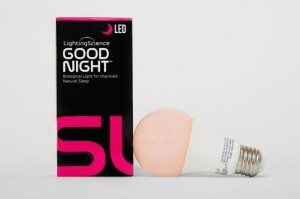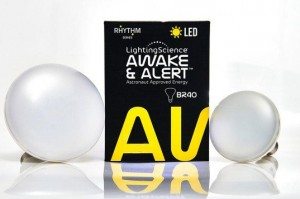It’s a cruel daily cycle. We get drowsy when it’s time for that big meeting, but are suddenly wide awake when it’s time to hit the hay. But did you ever think that swapping your light bulbs might be the solution? The researchers at Lighting Science Group have been studying the effects of different kinds of light on our sleep and awake cycles since they developed light therapy products for NASA astronauts, and have extended their findings to create a line of LED bulbs engineered to restore our natural circadian rhythms. Inhabitat recently checked out LSG’s HealthE biological light line, which includes an Awake and Alert bulb that promotes energy and cognitive abilities, a Good Night bulb that supports the body’s natural creation of melatonin for corrected sleep patterns, and the Sleepy Baby bulb that creates the perception of darkness to help babies fall asleep. Read on to see what we learned.
 |
The researchers at Lighting Science Grouphave extended their findings to create a line of LED bulbs engineered to restore our natural circadian rhythms. (All Photos Courtesy of Lighting Science)
|
You’ve probably heard that using your phone or computer before bed can hinder your ability to fall asleep, and Lighting Science Group’s products are based on the same basic idea of reducing and increasing the proper types of light at particular times of the day for different effects.
“Specific spectra of light, most notably blue light, has the ability to have biological effects on an individual,” Brandon Zaharoff of private equity firm Pegasus Capital Advisors (a majority owner of Lighting Science Group) explained to us at the company’s midtown Manhattan offices. “In the morning, increasing blue light has alerting and cognitive enhancing effects, while at night, you want to reduce the amount of blue light emitted to allow you to release melatonin and enable really restorative sleep.”
Lighting Science Group Founder and Chief Scientist Fred Maxik first developed his biological bulbs to help NASA astronauts fall asleep and maintain healthy circadian rhythms while stationed at the International Space Station, but the same technology can be applied to improve our own quality of sleep at home thanks to the Good Night bulb ($39.95), which lets your body know that it’s time for bed and encourages your natural production of melatonin.
The Sleep Baby bulb ($29.95) works in a similar way to signal to your child that it is time to wind down and rest. According to the New York Times, the bulb is recommended by doctors and praised by parents who use it.
But what about when it’s time to wake up? On the other side of the spectrum (light pun intended), LSG’s Awake and Alert bulb ($41.95)emits light that has been enhanced with blue light in order to boost energy and heighten alertness. The bulb mimics a light panel that the company developed for NASA to be used by astronauts right before they embark on specific missions in order to improve cognitive functions. According to LSG, students in a 9th grade classroom at a Virginia school where they placed their Awake and Alert bulbs over a year ago have seen marked improvements in their grades as compared to a second class that was not fitted with the bulbs.
In addition to homes and schools and space, Lighting Science hopes to expand the use of their bulbs in hospitals and work environments, and also offer products that stimulate the growth of plants and help keep animals safe in their natural habitats by helping them to avoid streets and highways.














